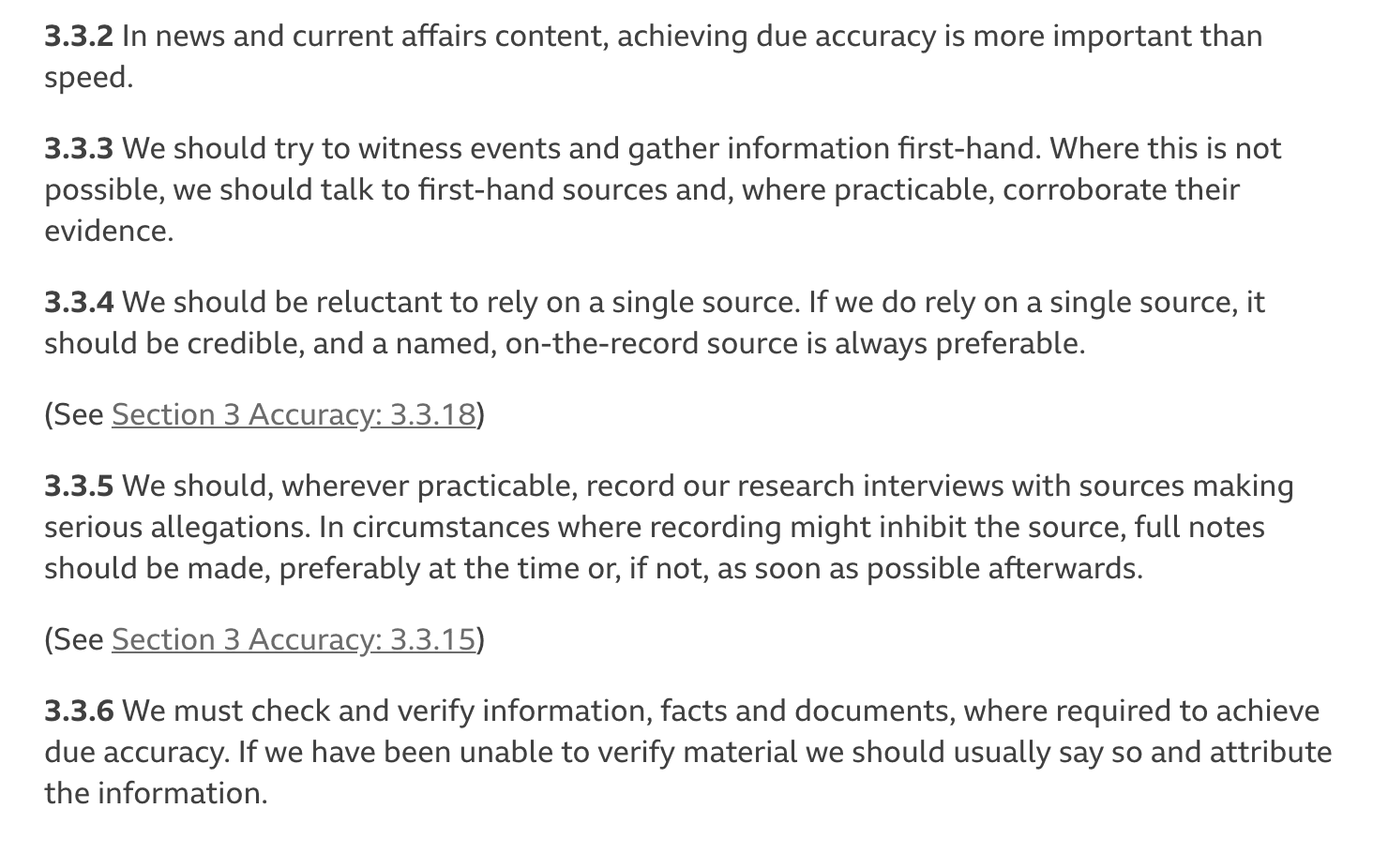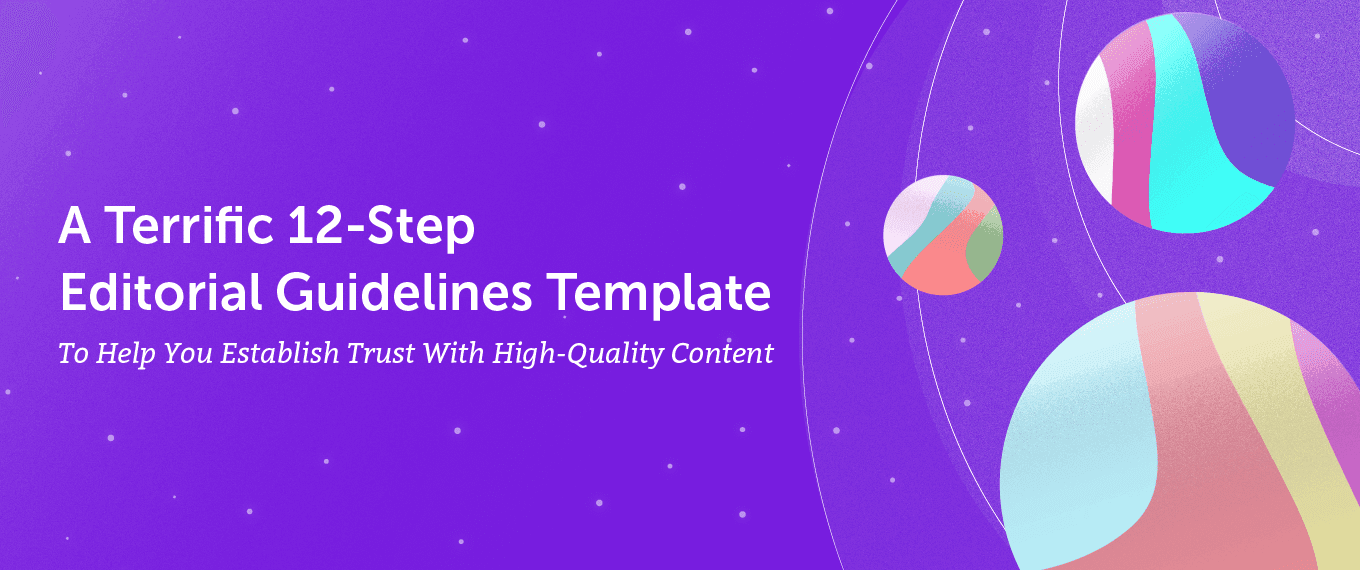A Terrific 12-Step Editorial Guidelines Template To Help You Establish Trust With High-Quality Content
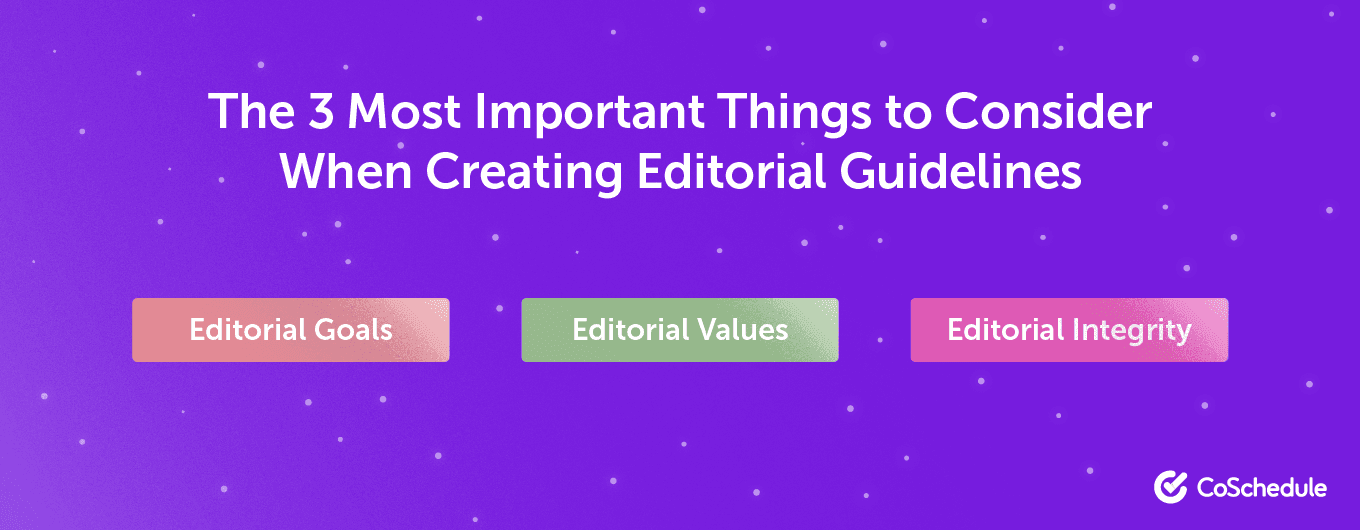
A terrific 12-step editorial guidelines template to help you establish trust with high-quality content.
Click To TweetHow to Create Effective Editorial Guidelines For Your Brand
You can use the following twelve steps to gather ideas and identify which guidelines are important for your brand. But in the end, every organization’s editorial guidelines will look a little different. You might decide to give them a different name. At CoSchedule, we call them standards of performance. HelpScout now calls them content principles. You might write your guidelines for a very specific audience. Maybe you’re only concerned about creating guidelines for freelance writers and contributors. Maybe you want to hold your internal team accountable for achieving goals. Or maybe, you simply want to set high standards for yourself. Finally, your guidelines might vary in length. You could aim for BBC’s 220-page behemoth or synthesize them into Copyblogger’s short and sweet three points. The level of detail you need depends on the amount of scrutiny your content will receive and your writers’ familiarity with your content. Whatever you want your guidelines to look like in the end, you can follow this twelve-step process to get there. Before we begin, make sure to download your free Editorial Guidelines template so you can follow along at each step.Part 1: Editorial Goals
First, outline why you’re creating content and who you’re creating it for. If you don’t start here, it’s easy to get lost and wander onto the podium of an English professor. You’re not writing editorial guidelines so you can rehearse the intricacies of literary devices. You’re establishing guidelines to make sure your content makes an impact — whether that’s improving ROI, educating a new audience about your brand, or sustaining relationships with existing customers.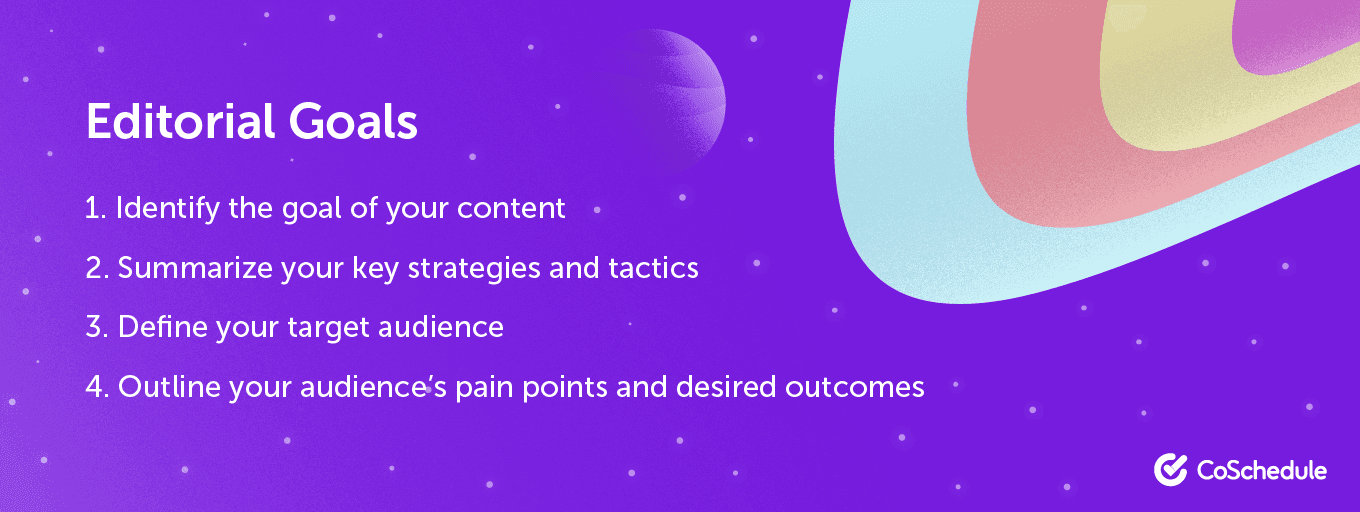
1. Identify the Goal of Your Content
Before you go any further, make sure you understand why your brand is creating content. Editorial guidelines are useless without an ultimate aim. You and your team need to know why it matters that you create high-quality content, or you won’t be motivated to keep the standards you set. Your content goal could be...- Generate demand for your product or service
- Collect leads or email subscribers
- Raise awareness about a cause
- Build trust with your audience
- Connect with customers consistently
- Inform your community about pressing issues
- Or any other goal important to your organization
Identifying a goal will help you stay focused as you're writing your editorial guidelines.
Click To Tweet2. Summarize Your Key Strategies and Tactics
Once you’ve established your goal, you can get more granular about how you plan to achieve it. Now, you’re not diving deep into strategy here. You’re just skimming into any specific strategies and tactics that affect how you measure your content’s quality. For example, at CoSchedule, one of our standards of performance is strategic keyword targeting. We included strategic keyword targeting as one of our standards because this tactic is fundamental to how we choose what content to create. It’s also vital to the success of our content goal. Without keyword-driven content, we can’t generate significant traffic or leads.3. Define Your Target Audience
Don’t assume that your audience will be obvious to any new writer you hire. Get specific about who you’re targeting in your editorial guidelines. Good Housekeeping begins its guidelines for contributors by defining the demographics of their readers: “Good Housekeeping addresses 25 million women. Most are married with children (anywhere from newborn to college age, but predominantly in the 6-12 age group) and work outside the home.” A writer approaching Good Housekeeping for the first time could guess that the publication is popular among women. But without these detailed demographics, she might not know to focus on married women with elementary-age children. To go deeper, you could also specify a few psychographics of your audience, such as their attitudes, hobbies and values. This will help you paint a more nuanced picture of your target persona.4. Outline Your Audience’s Pain Points and Desired Outcomes
When you’re creating content, your customer or reader should be at the forefront of your mind. And that means that what they care about, you should care about. Outlining your target audience’s main pain points and desired outcomes will help your editorial team think and feel like your customer. Pain points are issues or challenges faced by your target audience, often during the customer journey. Desired outcomes are the benefits that come from addressing those pain points. Here’s a an example from Content Marketing Institute that lists the their “audience’s typical challenges/needs/burning questions/pain points”:
Part 2: Editorial Values
Next, hone in on the core attributes of your content that set it apart as high-quality and useful to your audience.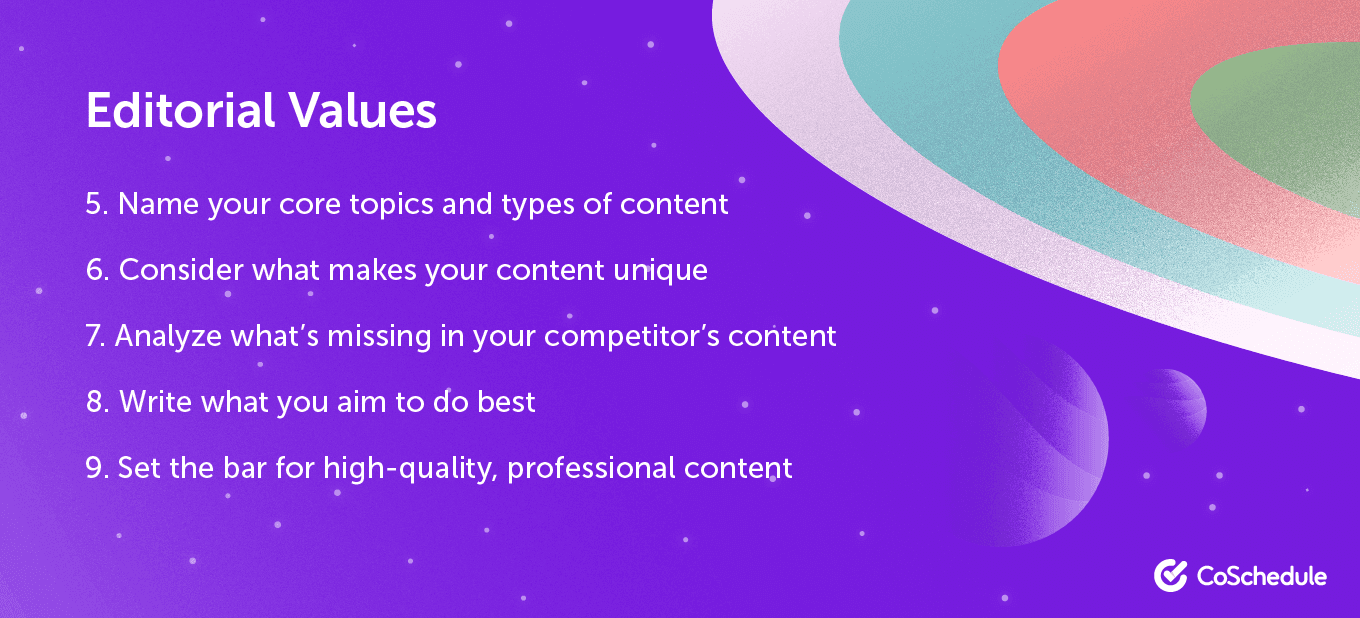 Gregory Ciotti, a content marketer for Shopify, writes, “Editorial values help determine the value your publication delivers to readers, prospects, and customers.”
Because while your organizational goals are important, you can’t achieve them if you’re not considering your content from your customers’ perspective. What value are they getting out of it?
Gregory Ciotti, a content marketer for Shopify, writes, “Editorial values help determine the value your publication delivers to readers, prospects, and customers.”
Because while your organizational goals are important, you can’t achieve them if you’re not considering your content from your customers’ perspective. What value are they getting out of it?
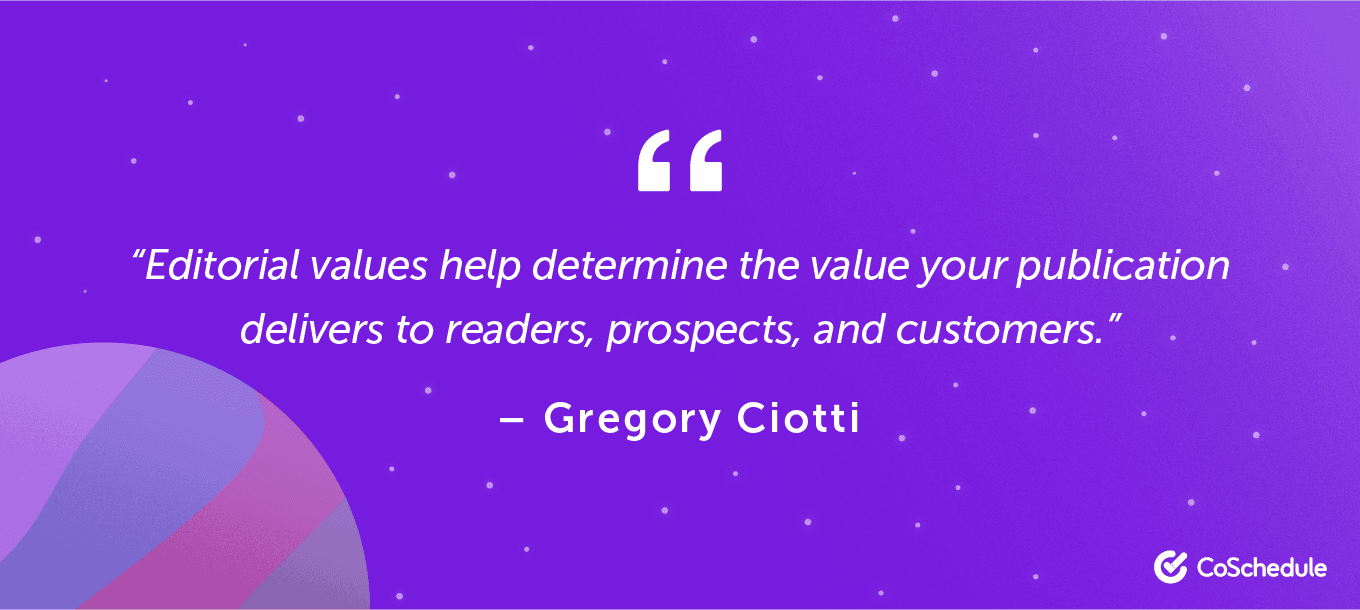
5. Name Your Core Topics and Types of Content
An easy way to start your editorial values is by stating the topics you primarily cover. If you’re managing a real estate agency blog, your topics might include the home buying process, market forecasts and home renovations. It’s also helpful to define what types of content you’ll be creating. “Content” means many things to many people. Will you create product roundup blog posts? Podcast interviews? Interactive how-to guides? Get as specific as possible without limiting your creative options. MarketingProfs include both topics and types of content in their guidelines: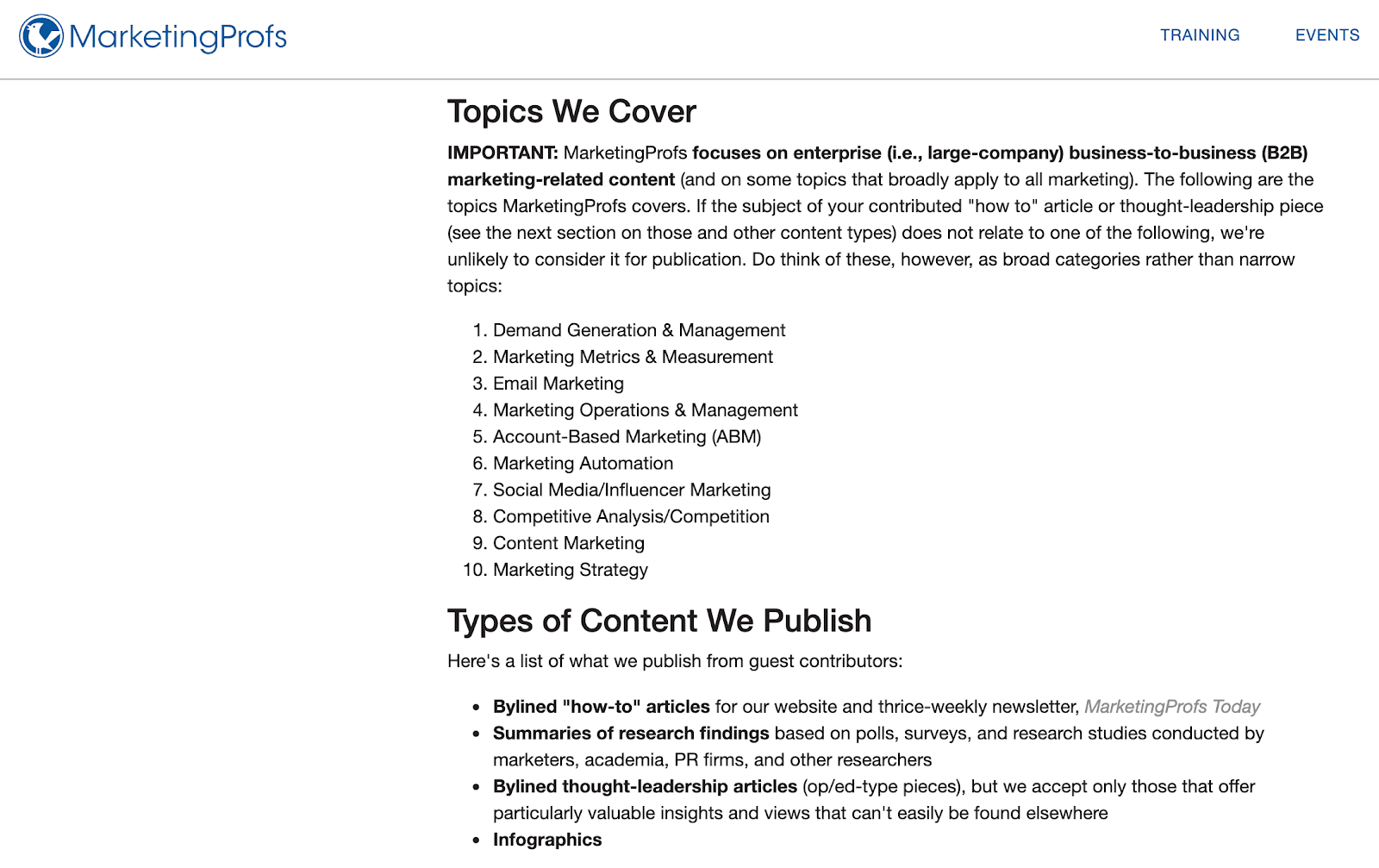
6. Consider What Makes Your Content Unique
As Gregory Ciotti points out, “If you can’t answer the question of what makes your publication unique and worthwhile, how can you expect other people to answer it?” The Harvard Business Review seems to understand and communicate this in their editorial guidelines: “We enlist the foremost experts in management theory and practice, collaborating to express their thoughts in the most influential way possible.” HBR won’t let just anyone with a bit of business knowledge or an MBA contribute to the conversation. Their content features ideas from “the foremost experts in management.” Few other publications can achieve that standard — and that’s what makes HBR unique.Make sure you point out what makes your content unique, so you can stand out from your competitors.
Click To Tweet7. Analyze What’s Missing in Your Competitors’ Content
Perhaps you’re saying, “We’re not Harvard Business Review. How can we be unique?” Finding your sweet spot isn’t as hard as it seems. All you have to do to find competition-free content is look at what others are doing, research their content, and strategize what you can do differently. Here’s an example from Gizmodo: “We listen to our readers, we don’t condescend to them, and we reject the artifice and sanctimony of news delivered from on high. We don’t take ourselves too seriously, and we tell things as they are.” Clearly, Gizmodo believes that traditional news writing comes across as too high-and-mighty. They noticed that their competitors weren’t willing to give up “the artifice and sanctimony of news delivered from on high,” so they made it their mission to write down-to-earth content. Take a look at the existing content in your industry. What’s missing that could be helpful to your customers and that your team is equipped to create?8. Write What You Aim to Do Best
This next step is similar to setting mission and vision statements for your content. Britt Skrabanek writes for ClearVoice, “A vision statement focuses on tomorrow and what an organization wants to ultimately become. A mission statement focuses on today and what an organization does to achieve it.” Think of that in the context of your content. What are you seeking to do best? That’s your mission. How do you want your content to be the best? That’s your vision.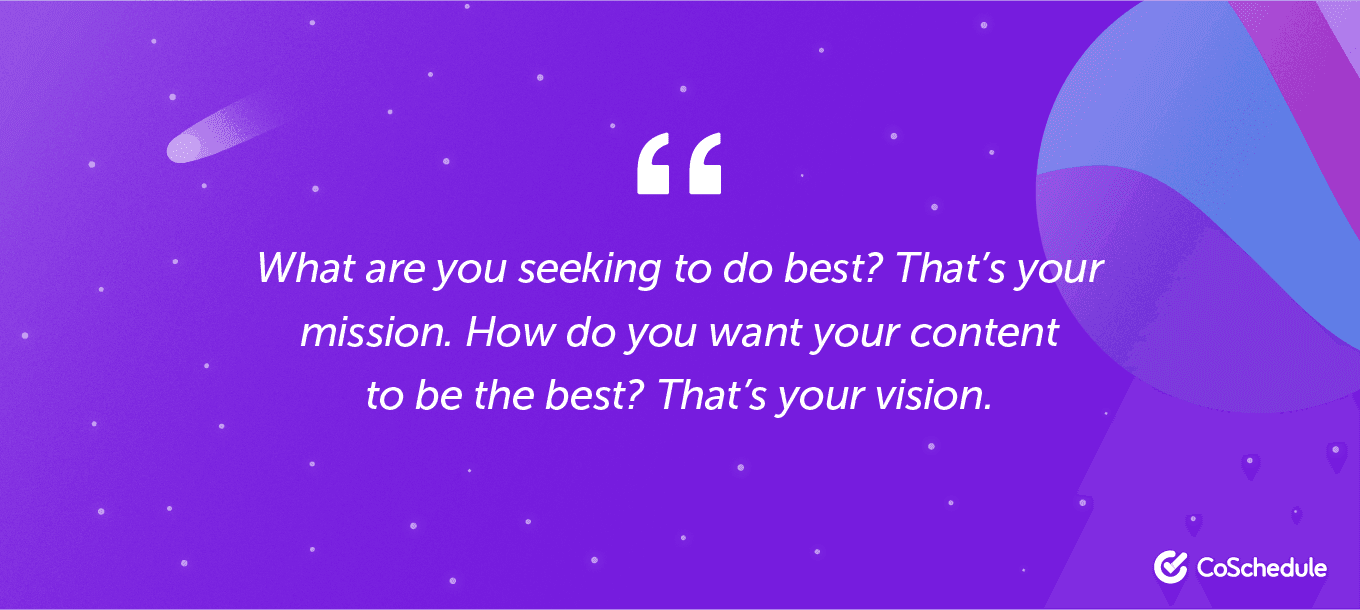 Here’s an example from the Balance Careers:
“It is our mission to help our users make the best purchase decisions—it’s that simple.”
They didn’t write a vision statement, but if they did, it might be, “Our vision is to be the most trustworthy, extensive source of information that consumers use to make purchase decisions.”
Here’s an example from the Balance Careers:
“It is our mission to help our users make the best purchase decisions—it’s that simple.”
They didn’t write a vision statement, but if they did, it might be, “Our vision is to be the most trustworthy, extensive source of information that consumers use to make purchase decisions.”
9. Set the Bar for High-Quality, Professional Content
For the last step of your Editorial Values section, take a moment to detail your expectations for high-quality writing, design, photography, videography or other types of content you publish. After all, content isn’t confined to the written word. For a magazine like Adventure Cycling, the quality of the photos that contributors submit with articles is just as important as the quality of their writing. Here’s an excerpt from Adventure Cycling’s image guidelines: Notice that Adventure Cycling doesn’t just list a bunch of rules for photo preparation. They explain why these rules are an important part of their editorial values.
If you find yourself wanting to write extensive technical requirements, you might consider writing a separate style guide. Here’s how to create a style guide.
Notice that Adventure Cycling doesn’t just list a bunch of rules for photo preparation. They explain why these rules are an important part of their editorial values.
If you find yourself wanting to write extensive technical requirements, you might consider writing a separate style guide. Here’s how to create a style guide.
Part 3: Editorial Integrity
Finally, affirm your commitment to ethical and professional standards. Even if your content wouldn’t fall into the highly-scrutinized category of news, it’s still important to provide well-researched, transparent and honest information. Your brand’s reputation is at stake, after all. Anticipate any potential objections to your content’s integrity now, so you don’t have to face them later.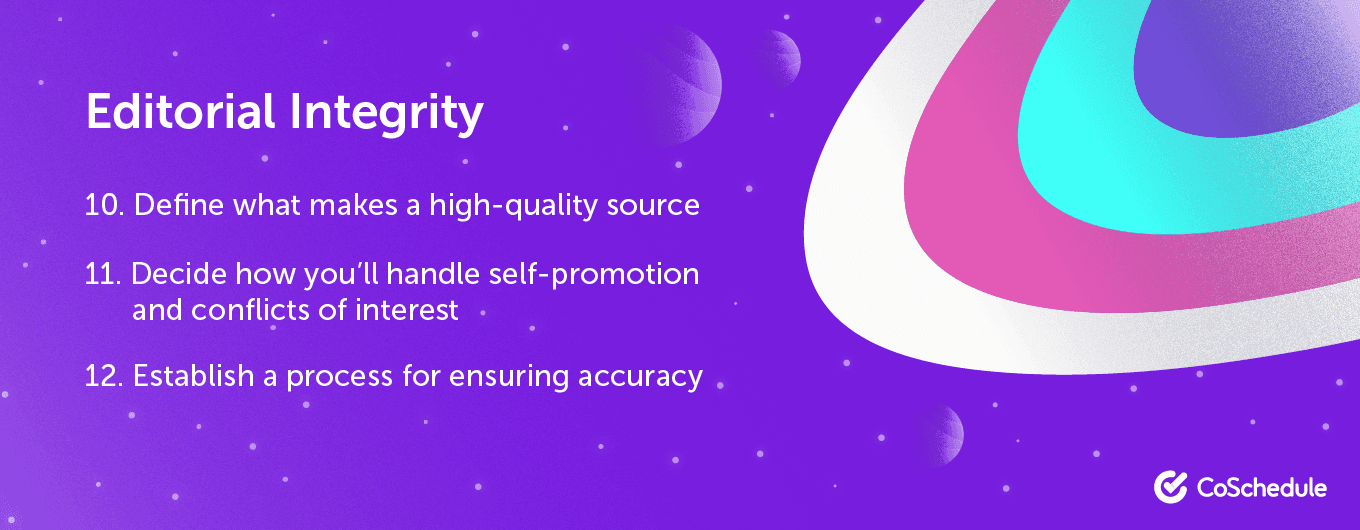
10. Define What Makes a High-Quality Source
The definition of a “good source” varies significantly depending on your industry. If you work for a medical device company, for example, you will need stricter standards than a food blog. Peer-reviewed, academic journal articles and interviews with medical doctors would be ideal sources for your content. News-related content also needs to follow rigorous standards because people are skeptical of news sources. Time Inc.’s Editorial Guidelines cover appropriate protocol for using anonymous sources, setting the terms of an interview and other important information for its reporters. Still, every brand needs to think about sources. Can your writers link to Wikipedia? Or a competitor’s blog? How about a website with a strong political or religious slant? What you decide is up to you, but now is a good time to clarify your expectations for high-quality sources.Make sure you clarify your expectations for high-quality sources.
Click To Tweet11. Decide How You’ll Handle Self-Promotion and Conflicts of Interest
Again, the right guidelines for this step depend on your type of publication and content goals. If you use advertising or affiliate links to monetize your content, you may want to address if and how those relationships affect your editorial content. If you accept guest writers, you may want to clarify rules for self-promotion, backlinks and disclosing financial relationships. Here’s an example from Entrepreneur: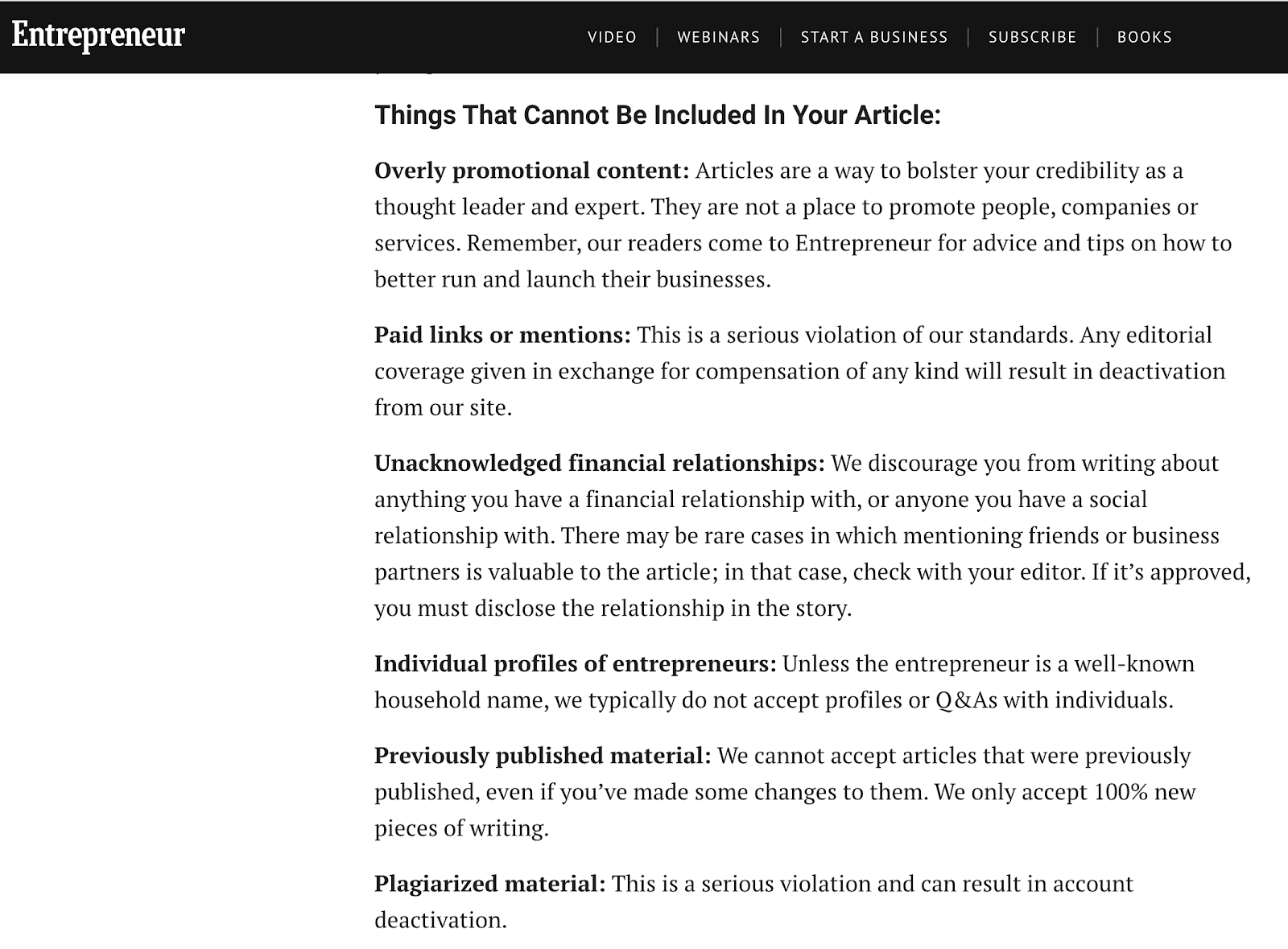
12. Establish a Process for Ensuring Accuracy
Giving false information — knowingly or unknowingly — will break your customers’ trust in you. That’s why it’s important to think about how your brand will ensure accuracy in the content you publish. Creating fact-checking guidelines for before, during and after the writing process will help you prevent mistakes that could harm your brand’s reputation. This final step is especially important if you’re writing Your Money or Your Life (YMYL) content. Julia McCoy of SEMrush explains, “Your Money or Your Life (YMYL) content is the type of information that, if presented inaccurately, untruthfully, or deceptively, could directly impact the reader’s happiness, health, safety, or financial stability.” Google's search quality evaluators care about accuracy in these areas, and you should, too — not just to please Google, but because Google created those guidelines for a reason: factual inaccuracies can have serious consequences on your customers’ lives. BBC has an entire section on accuracy in their editorial guidelines. Here’s a snippet from section 3.3: